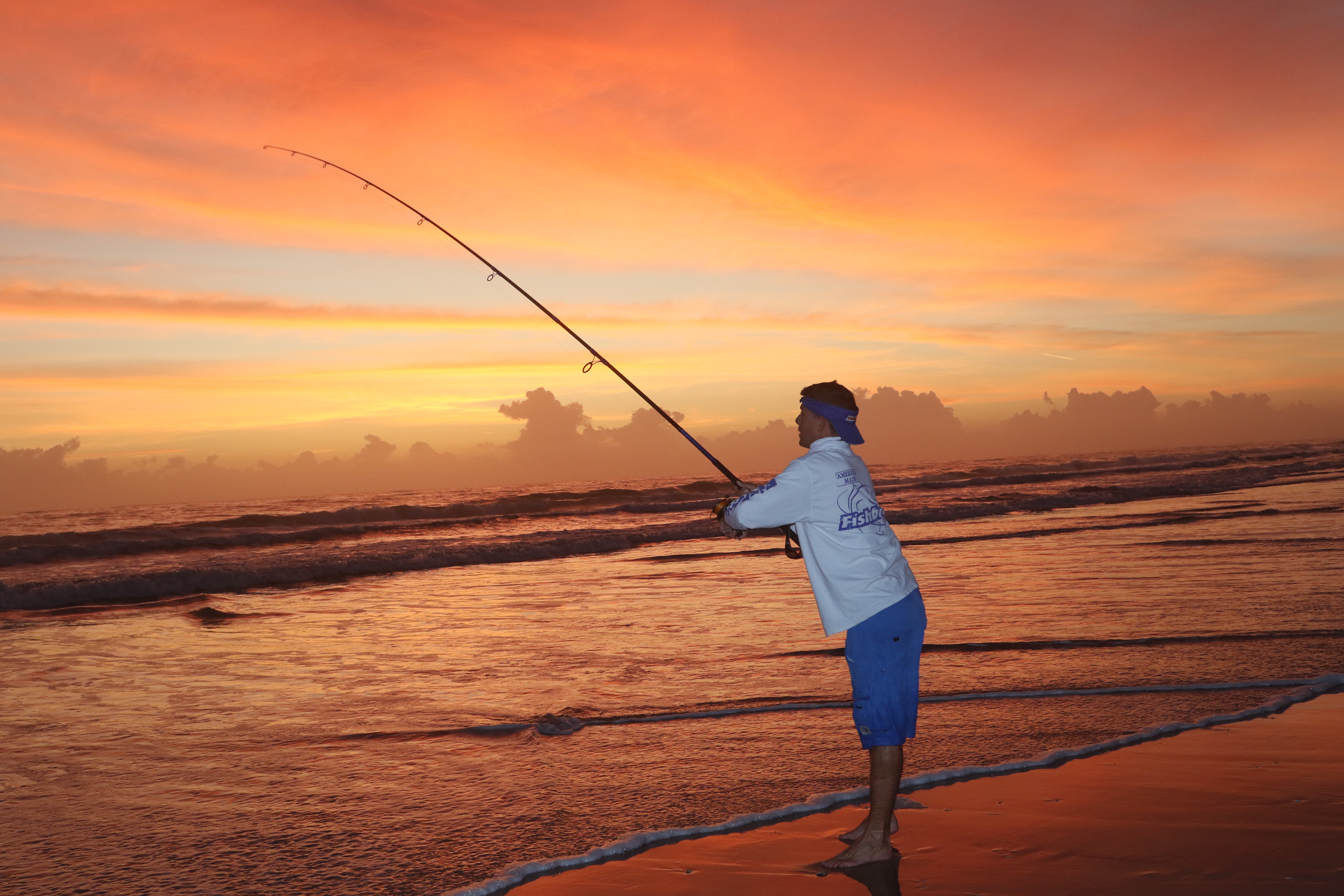
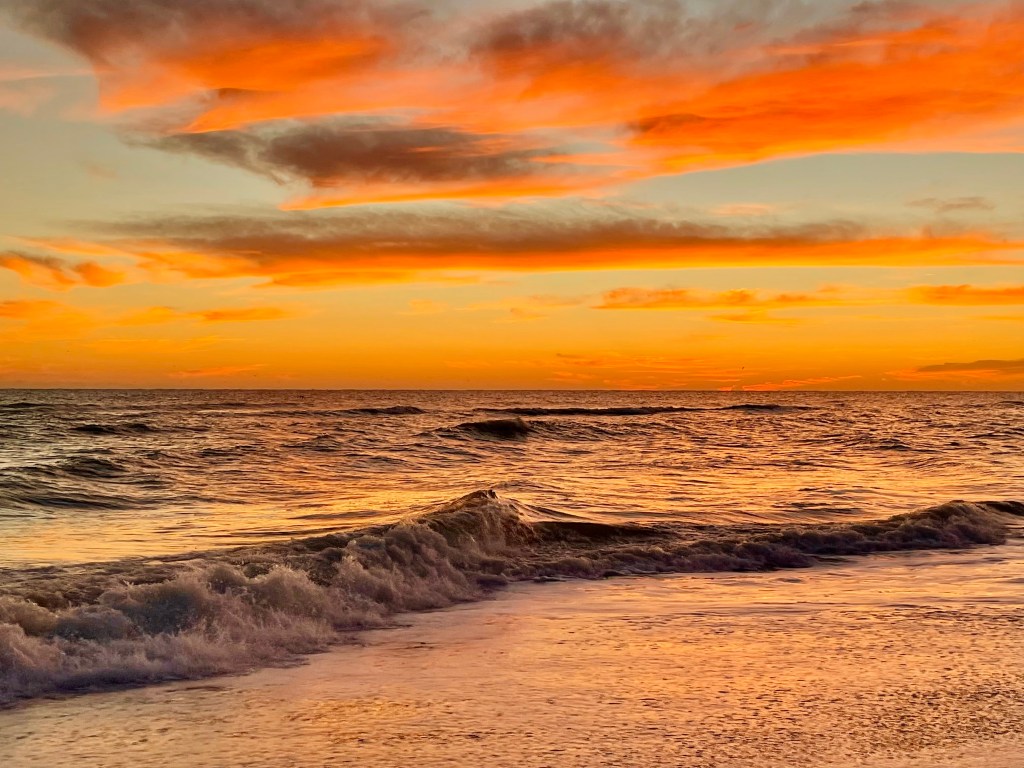
The alluring visuals last well past sunrise, as does the angling potential. Along the way, lessons accumulate like sea foam.
Don’t miss that subtlety. It’s literally the anchor point.
For those unfamiliar with post-coast line wetting, questions abound. “Where do I start?” “Where do I go?” “How long do I have to stay?”
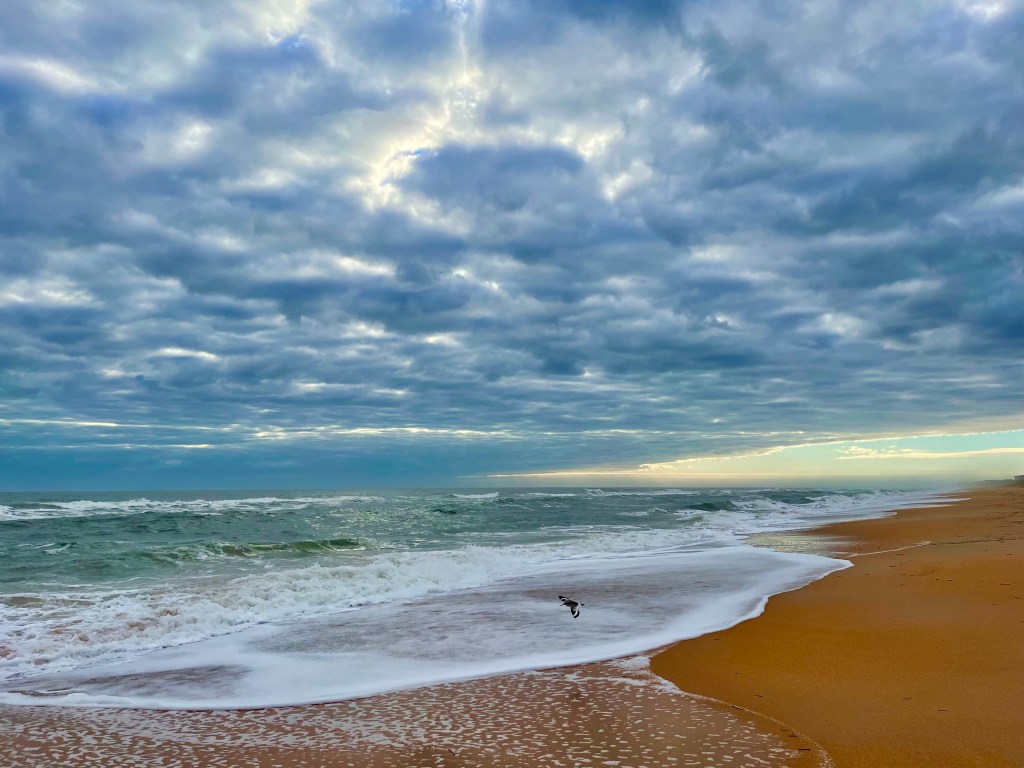
Okay, take a breath. Compared to even the larger rivers and lakes, oceanic enormity fairly overwhelms.
At some point, we’d all like to experience the deep blue’s storied offerings, but if you’re new to saltwater pursuits, you gotta find your Square One; somewhere you can sample the vibe and decide if this is for you.
The edge; the very edge where water meets sand is unquestionably the most user-friendly of possible starting points.
Go hardcore, take it half throttle, integrate it into a family picnic — surf fishing defines “your way.” Kids will love it because peripheral activities from wave splashing to sand castle building to ghost crab chasing break up the down time.
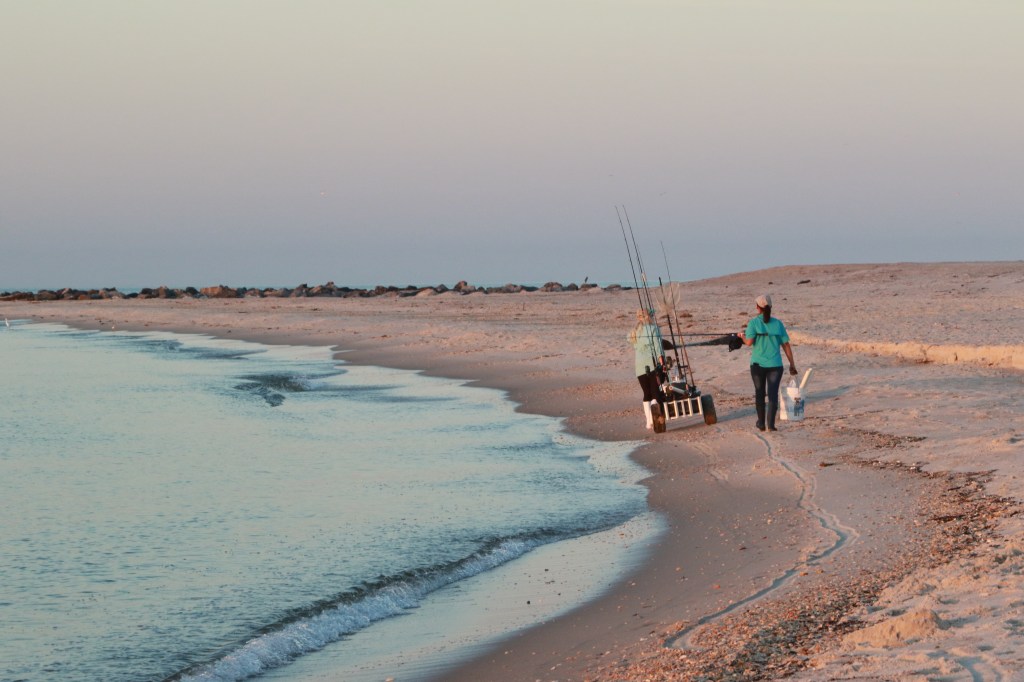
Size it up
No doubt, the ultra-sketchy rock hopping you’d see at Northeast striped bass favorites like Montauk and Block Island offers world-class adrenalin shots. But that’s pretty far down the experience road, so we’ll stick with the low-stress theme and focus on your less strenuous, safe-for-anyone surf fishing.
From secluded, driftwood-strewn stretches of the Pacific Northwest coast, to North Carolina’s Outer Banks and down to Florida’s less-crowded beaches, the surf offers walk-up immediacy. No long boat rides, no pricy fly-in adventures; respectable fishing often awaits inside of 10 minutes from your parking spot.
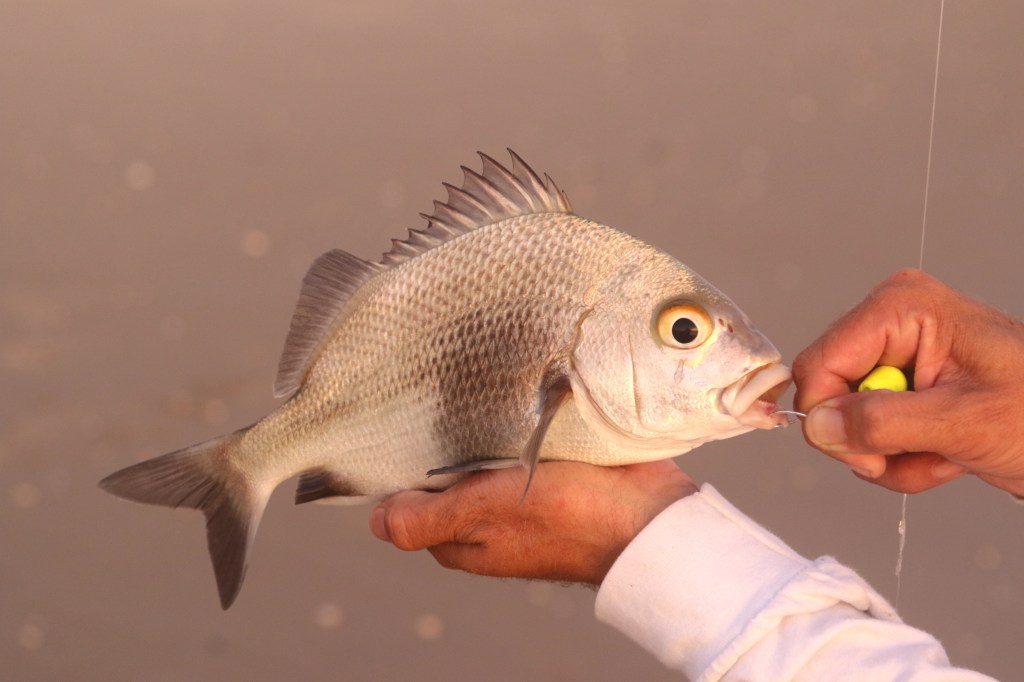
Species mix varies by region but local bait shops, YouTube channels and state fisheries agencies can prep your expectations. Day to day, you’ll find a mix of fast-paced baitfish eaters like mackerel, bluefish and sharks keeping company with grazing bottom feeders from West Coast surf perch, to Atlantic pompano seeking crustacean and mollusk meals.
Worth a mention: The longer you’re willing to hike and the more remoteness you can handle, the greater your opportunity. Managed beaches don’t allow fishing in the swimming areas, but even adjacent commotion deters the top-tier surf species, so numbers increase with seclusion.
Just don’t think you have to depart civilization to catch fish in the surf.
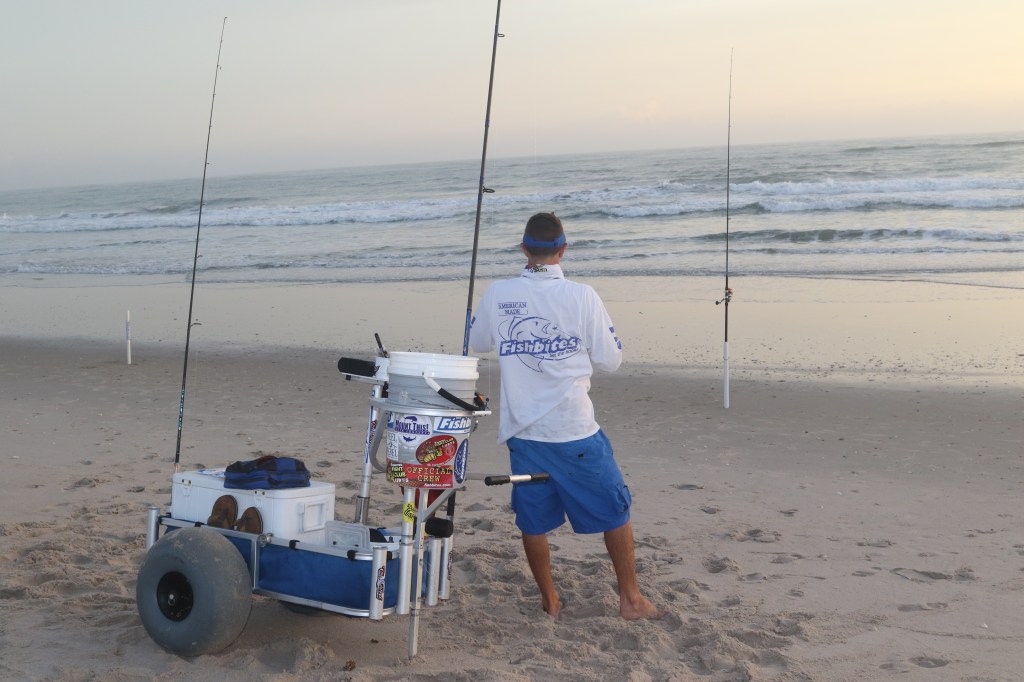
And don’t assume this is solely a newbie thing. Gear options are many and popular surf fishing beaches showcase the high-end tackle and tricked-out gear carts that level up the serious surf angler’s game.
Sky’s the limit and advanced experience typically merits advanced tools. But… here’s the thing: You absolutely do not need a couple of paychecks worth of gear to get your feet wet (pun intended).
One rod/reel combo, one homemade PVC rod holder (bottom cut to a sand-penetrating angle), a couple of double dropper rigs and weights (available at any coastal tackle shop) and a bag of baits (same shop) and you’re surf fishing.
Baits also vary regionally and industrious types quickly learn to catch their own. (Another lesson for another day.) However, you can’t go wrong with shrimp, mole crabs (aka “sand fleas”) or Fish Bites — a durable synthetic bait made with real fish and crustacean scents/flavors.
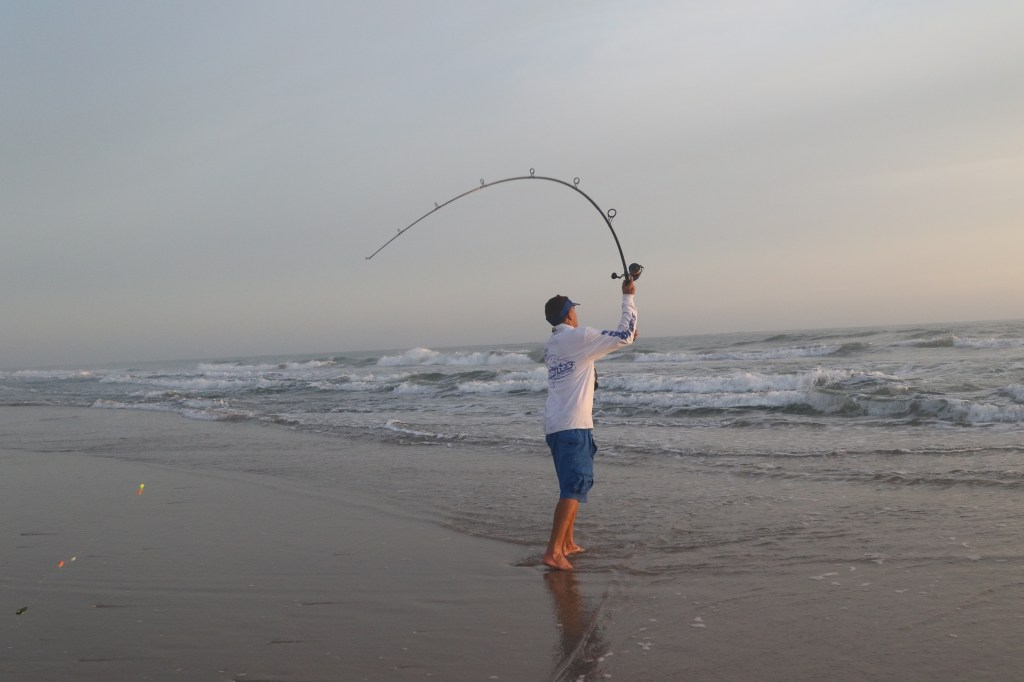
No pressure
Budgets, time constraints, experience/ability — all common deterrents, but surf fishing erases, or at least, minimizes these concerns. A little time behind a reel certainly helps, but the surf is a most forgiving environment. With time, you’ll learn to recognize and target the darker deep areas and lighter sandbars, but if you can hit the water, you can start surf fishing.
Think of it like open mic night at the local watering hole. No one’s auditioning for American Idol and anyone who wants to belt out their favorite tune — maybe gain a little experience for the next level — can step and give it a go.
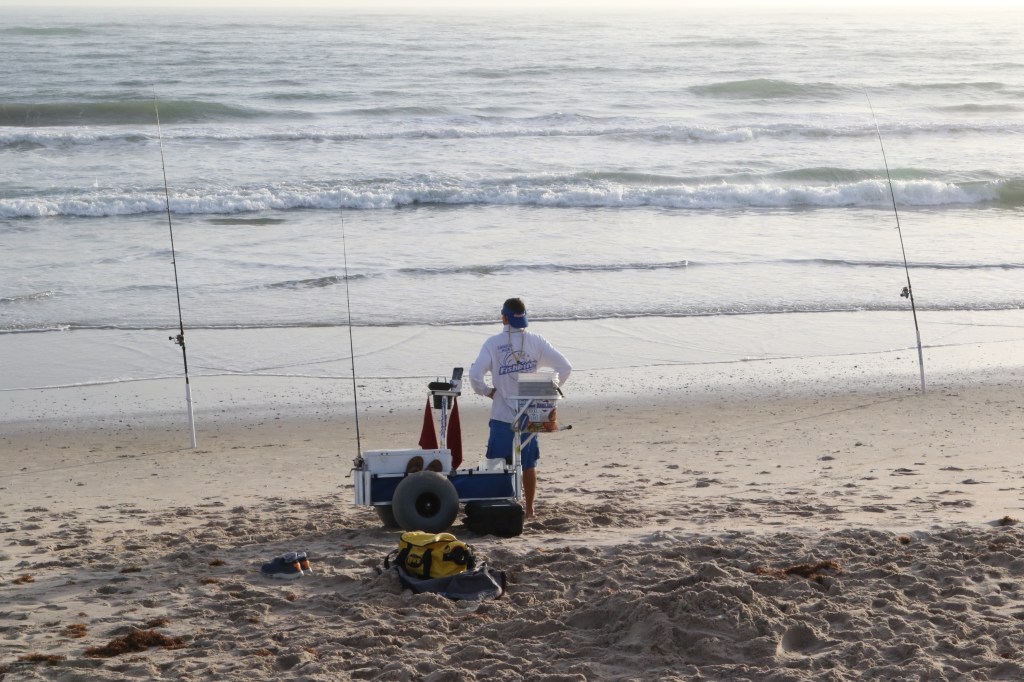
The surf neither discriminates, nor intimidates; rather, it invites and encourages anglers of all levels with a comforting simplicity that often yields the kind of success that motivates further growth. Whether you’re considering boating or paddle craft fishing, starting with your feet on the beach makes a lot of sense.
Gourd-green beginners are welcome, but so are briny blooded lifers. I’ve fished the sea since my teens and I still love slinging a bait into the waves. The motivation self perpetuates and once you connect with that truth, it never leaves you.
Company Kept: A little touchy here, because parking too close to another angler’s rod spread will prompt a stern look, if not an outright reproach. However, in most cases, politely greeting an established angler, striking up a light conversation and then respectfully asking if it’s cool to share the area will not only earn a welcome, but a bucket full of priceless advice.
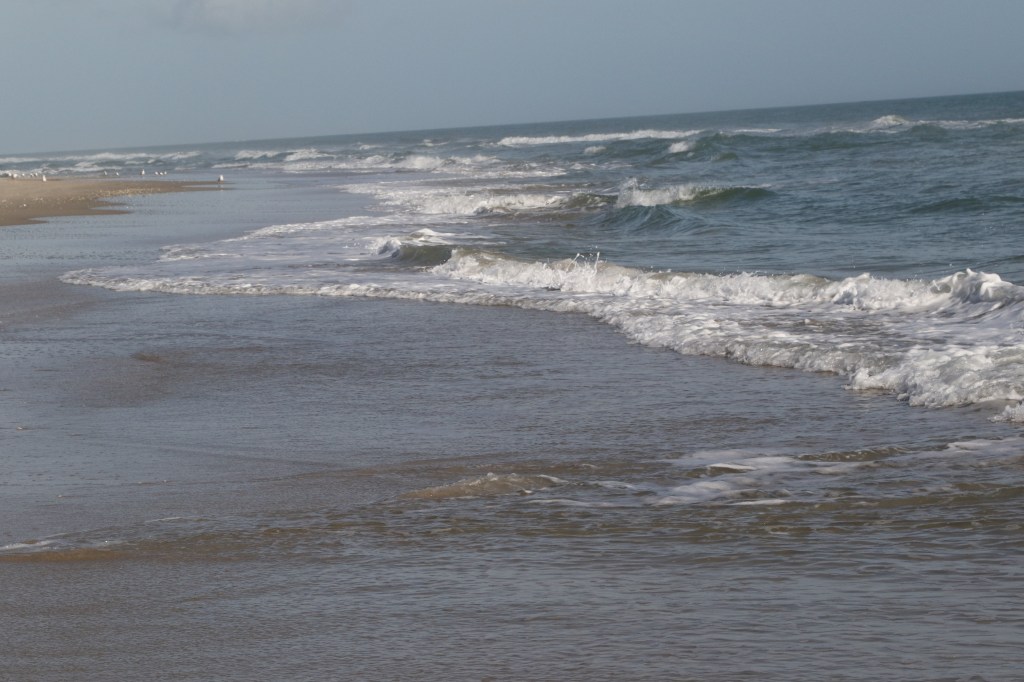
Mood and meaning
Surf fishing’s exhilarating, yet calming. You’ll have time to check your phone, but little desire to do so.
You can hear yourself think and you can hear the sea speak to you.
Maybe not directly, but the surf offers hints to those who’ll listen. Watch how the waves advance and depart. Anything other than an even line means something’s interrupting or deflecting water movement.
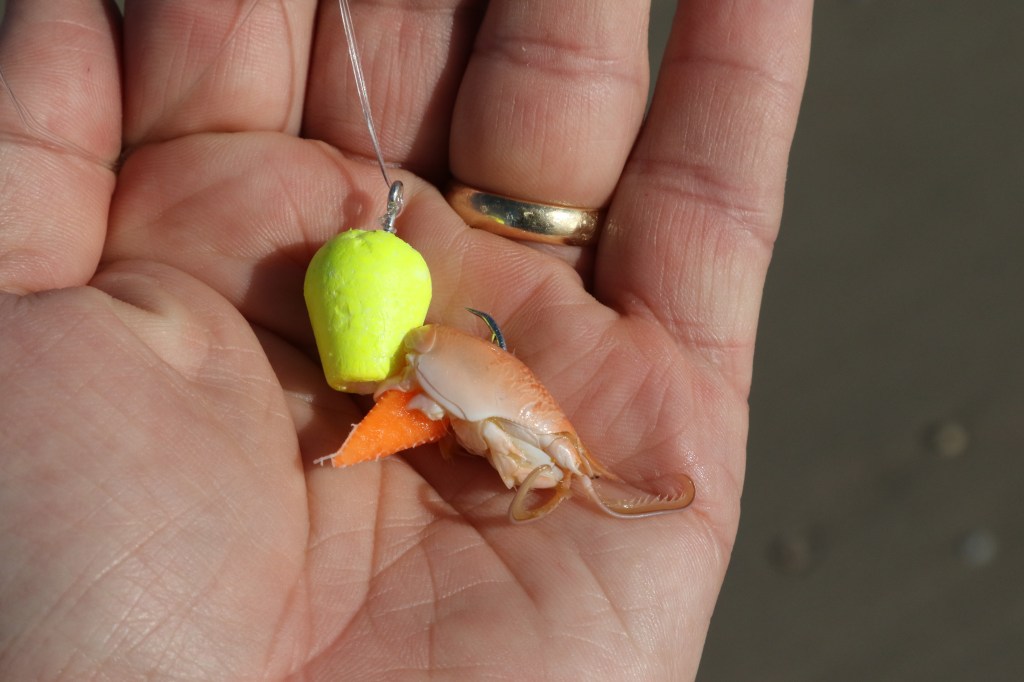
That’s fishing 101: “Different” equals fish-friendly.
Spot a “run-out” — a tight funneling spot amid the sheet of leaving water — and you’ve found a deeper alley draining off the shallows. Depth variances gather baitfish, shellfish and crustaceans and create feeding opportunities.
Can you catch surf fish on a random cast straight off the beach? Sure, it happens. But same as bass flipping, marlin trolling, or bonefish stalking, success more often awaits within high-percentage areas.
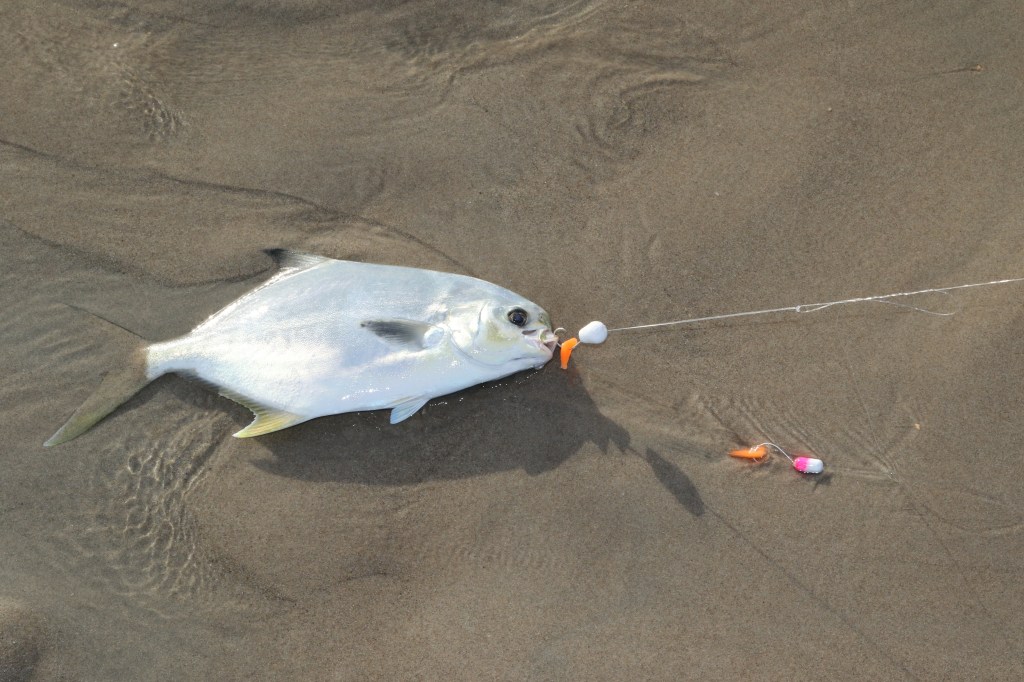
Ask yourself where predators are most likely to A) corral baitfish, or B) find the greatest concentrations of mostly stationary forage? Points, holes, bars, troughs — they all facilitate feeding.
Tip: Use your eyes, but trust the birds — they do this for a living. Pelicans diving or flying low to the water indicate baitfish schools, while hovering, screeching gulls and terns point to predators feeding below. The smaller birds pick off the dinner scraps, so keep watch for these active areas.
Even if you’re only interested in the bottom feeders, a lively area generally hosts the full spectrum of local faves.
Take it in
While catching a fish defines the objective, don’t overlook the journey’s enlivening experience. Nothing against boating efforts, but surf-fishing’s connective; it plants you squarely upon your playing field and infuses every breath with intimacy.
Look closely — and I mean hands-and-knees closely — at the remnants of each departing wave. Life and evidence thereof abounds.
On Florida beaches, you’ll see thousands of tiny colorful bivalves called coquina clams scurrying and scooting. Watch for distinct “V” wakes in the departing water and if you’re quick enough, scooping up a sand flea burrowing back into the sand never fails to delight kids — and provide fresh bait.
I’ve made plenty of cool memories while surf fishing, but none so magical as locating a stretch of beach where a couple dozen sand fleas were filtering meals from retreating wave sheen. The surf was relatively calm and the beach flat, so I was able to time each wave window and snap a few images during the two to three seconds when the little crabs extended their feathery feeding antennae from sandy burrows.
It looked like sports fans waving rally towels for the home team. Never one to miss an educational moment, I figured this must be one of the ways pompano, whiting, and others locate these tasty treats.
By angling standards, that day was unproductive. By the soul-filling, nature-loving passion that daily calls me to the water — slam dunk.





